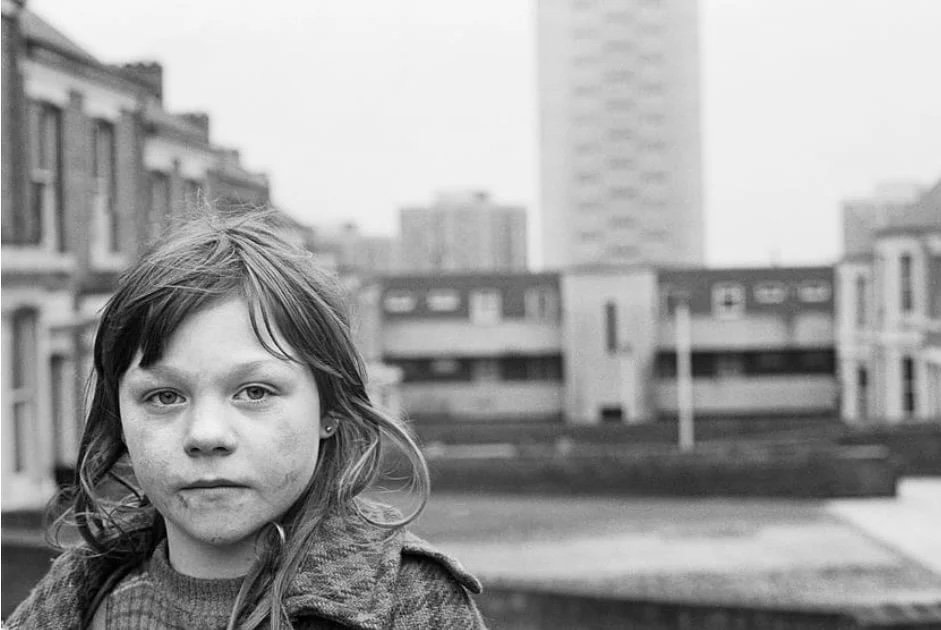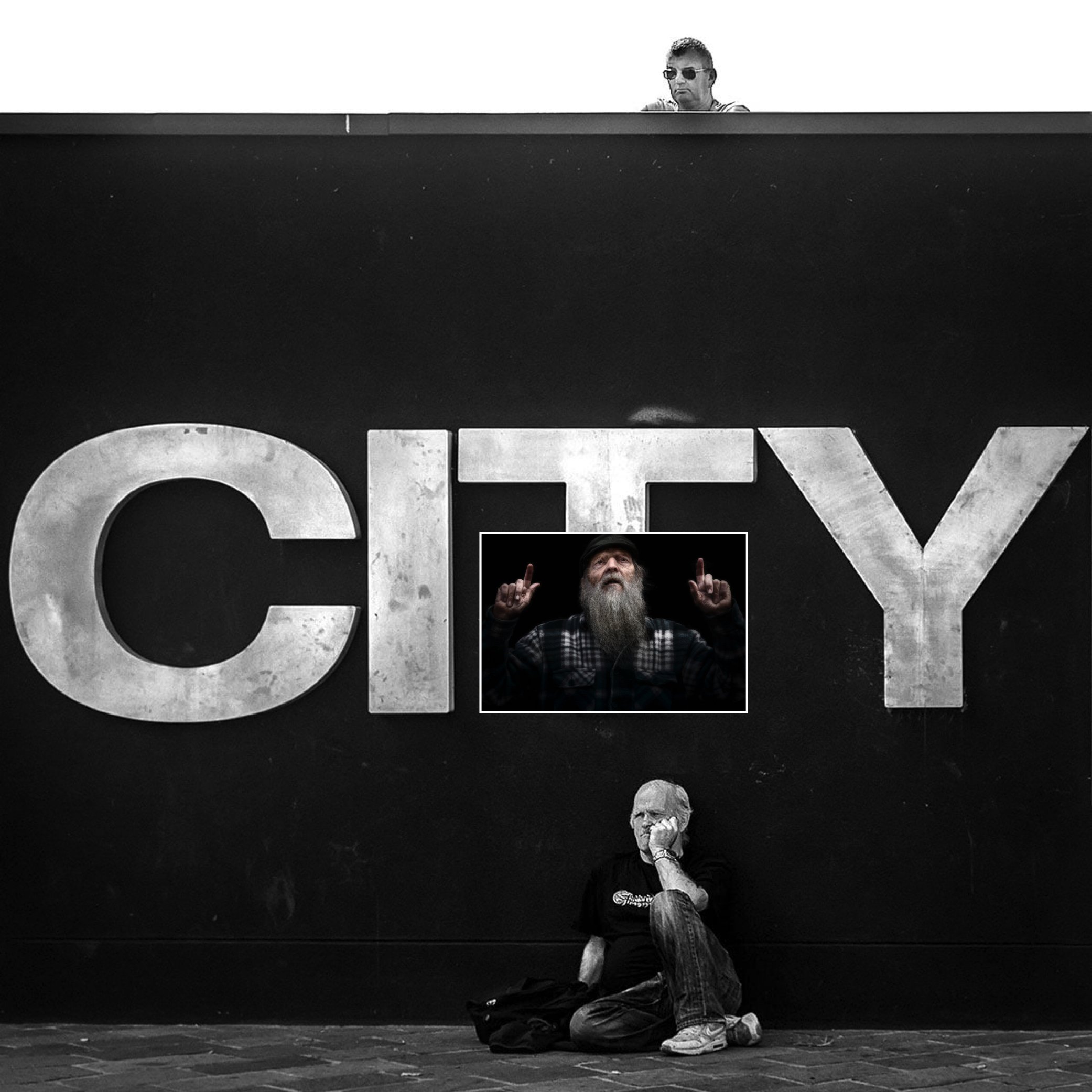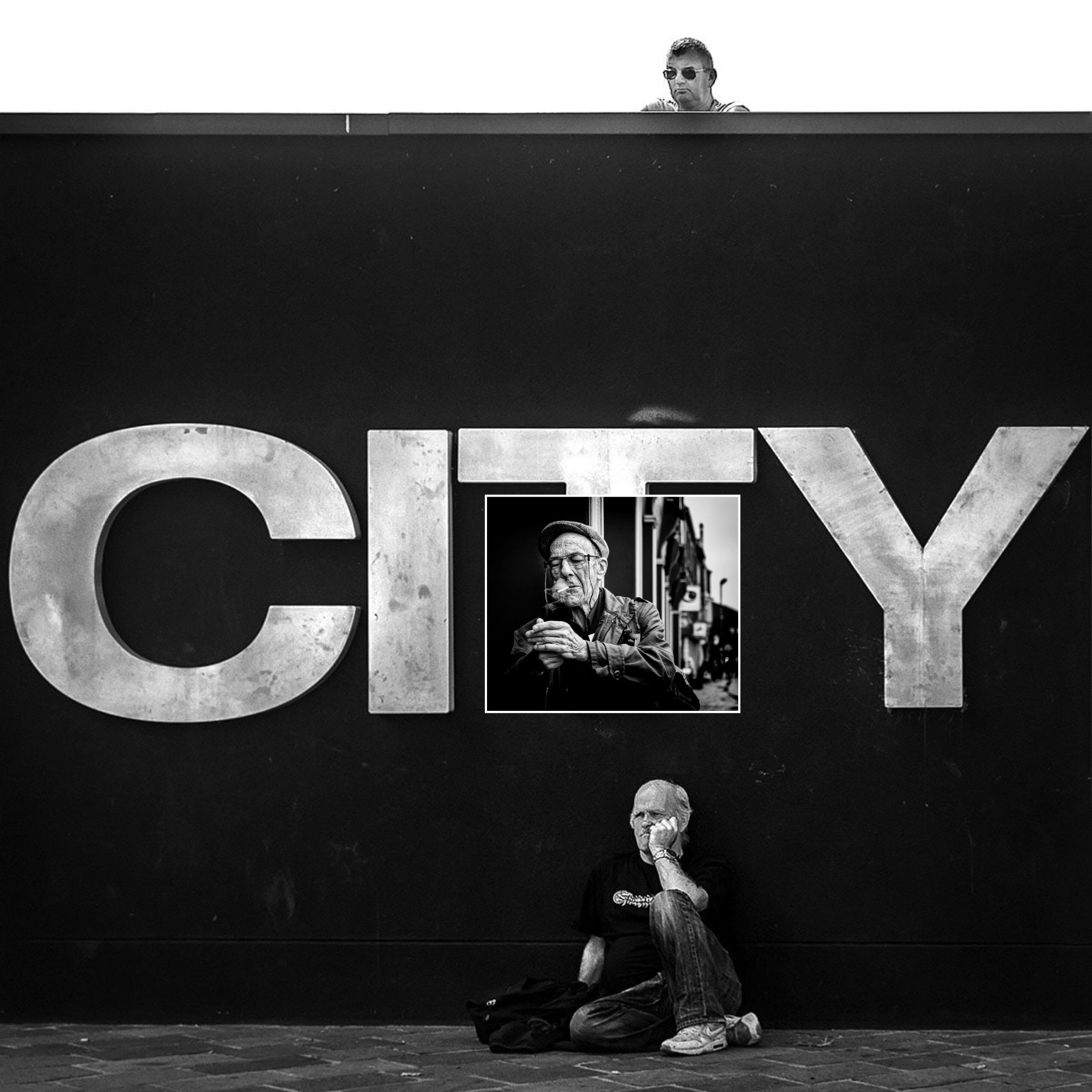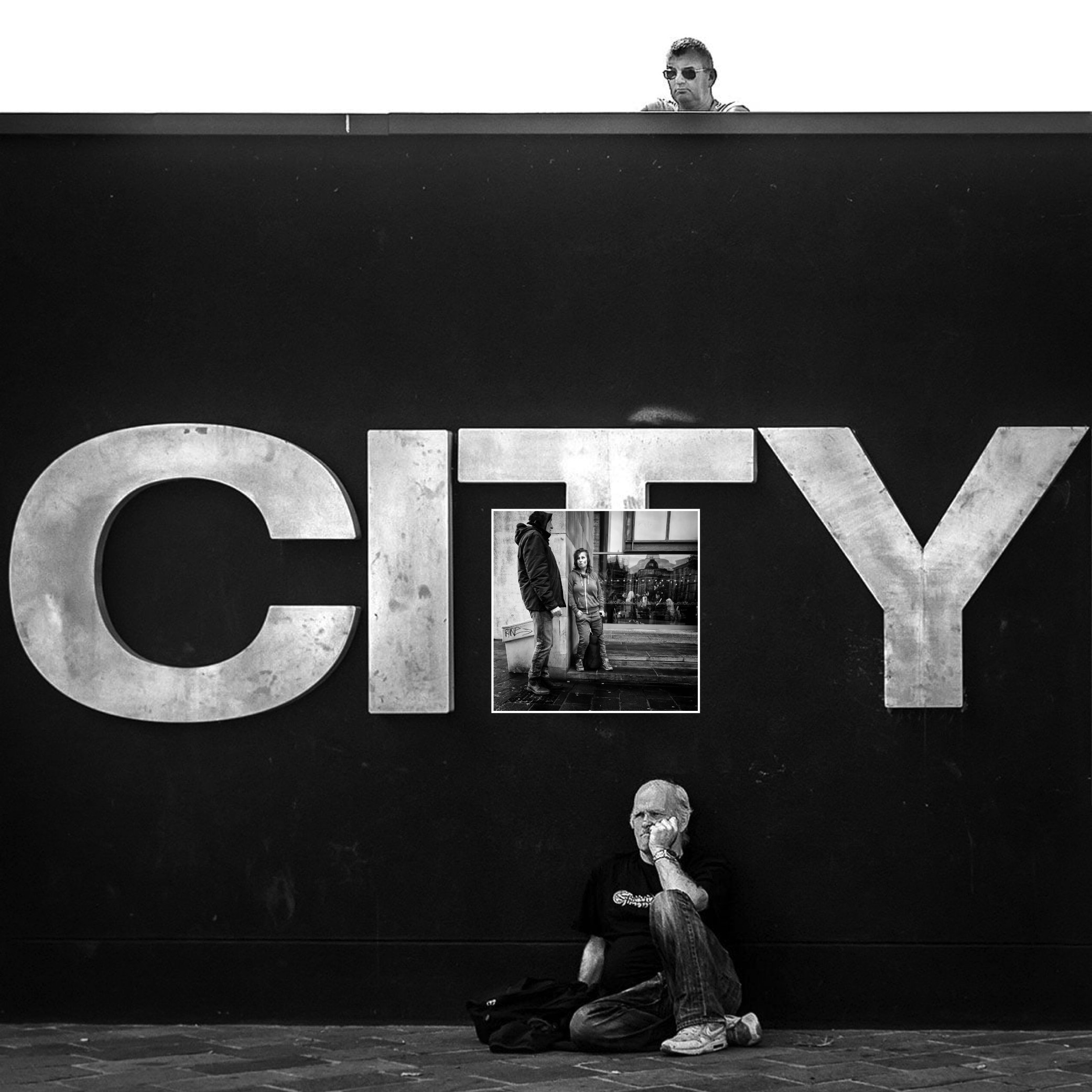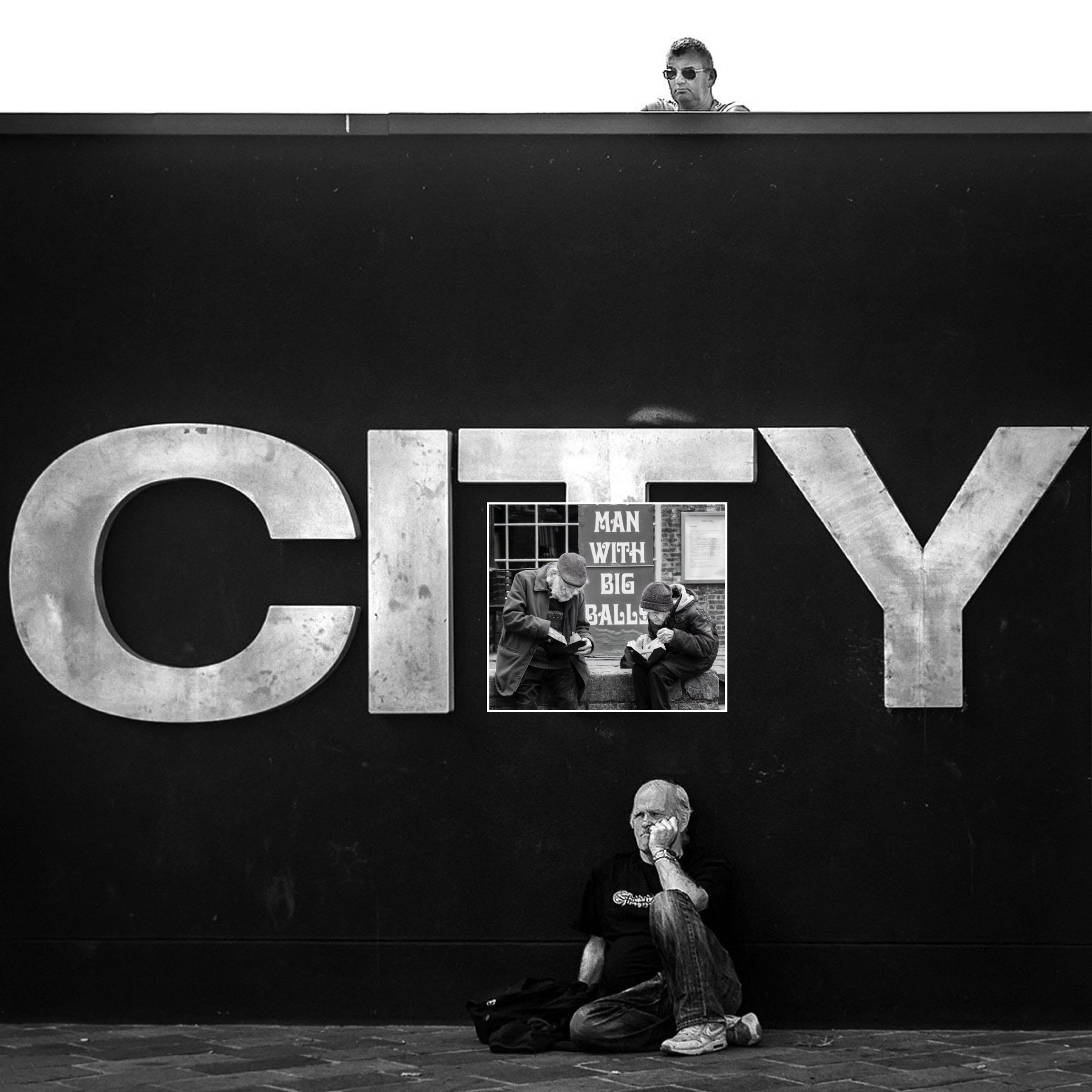A collection of short articles on photography
Photographers, perverts and paranoia…
What really disturbs me is the connotations that go along with the criticism. People know it’s an emotive subject and use that against people. I thought paranoia might be too strong a word but I think it’s about right unfortunately.
Photographers are the bad guys now
A time ago a friend of Bridget’s was taking pictures in Bradford city centre, the City Park. Bridget’s friend is a keen amateur photographer who uses a Canon 5D DSLR. She is also in a wheelchair. She was approached by a woman who demanded to know what she was doing, she explained she was just taking pictures; the fountains, the people – general stuff. All perfectly innocent and legal. She even offered to show her the pictures. She was then called a ‘fucking pervert‘.
Apparently, the woman thought that the photographer might have been taking pictures of her kids. I certainly feel that a mother who uses the term ‘fucking pervert’ to an innocent woman in a wheelchair in front of her kids is a far greater risk to their wellbeing than a disabled photographer.
A while ago I posted a short piece on here about the problems facing street photographers – stories like the one above makes me think I underestimated the problem.
There was a case recently of an American photographer who was vilified and subjected to threats on social media because he was videoed (the irony was lost on many people) taking photos in a fairground – again perfectly legally.
This targeting of photographers is getting much worse, and it’s not just ‘street photographers’. Bridget’s friend was only doing general stuff – the type of photo that dozens of other people were likely to be doing on their mobile phones. She just happened to have a ‘professional-looking’ camera.
I’m not aware of any evidence that says using a ‘professional’ camera makes you more of a risk than those who use a smartphone. In fact, it’s widely accepted that children are far more at risk from family members than they are from strangers.
We have seen it ourselves much closer to home and not just in a serious photography context. There is an instance where a new grandma was banned from putting any pictures on Facebook of her grandchild because ‘someone might print out the picture, stick it on their wall and pretend the child was their own’. This even though the parents and their friends openly posted dozens of pictures of the same child (even the very same picture!) all over social media. It just so happened that the grandma was a keen photographer.
Thinking about it, however, I feel that the photographic threat (and what they really mean is a paedophile threat) is just a side-effect of the increasing hatred, fear, suspicion and paranoia in society as a whole.
Of course, no-one disputes the fact that a parent seeks to protect their kids, that is perfectly natural and commendable. I do wonder sometimes what they think they are protecting them from. Sticking with this perceived photographer threat for a moment, I don’t believe anyone with an unhealthy interest in kids would be openly shooting fully clothed kids in broad daylight with a professional camera.
It reminds me of Chris Morris’s Brass Eye ‘Paedogeddon’ special from way back in 2001.
So why are we so suspicious (paranoid?) today?
I’m not a sociologist or psychologist so these are just a few thoughts based on what I see and hear. Importantly I don’t believe photography is the threat it’s perceived to be. Nor do I feel that many of those people so strongly against it could readily elucidate their rationale for feeling the way they do. The example above with the grandchild photo would seem to confirm this.
I do however feel that people are angry, fearful, suspicious and distrusting to an extent that is not justified by their real-world experience.
Social media
The internet plays a large part but that is just the tool for delivery. The problem stems from people with influence and power. The internet and the anonymity it provides gives a voice to those with views that were once on the margins. Humans have prejudices, we can’t avoid that but in general, they are kept in check. With the ability to reach a larger audience and with the freedom to voice views that they at one time would be reluctant to say openly, extremists grow in confidence.
Worryingly those with power (and those who would seek some kind of power) exploit this. The rise in nationalism is also, I think, both a symptom and a cause of this fear and anger.
If we look at many groups and pages on social media we can see this rage and fear quite clearly. Facebook groups relating to what’s happening in a local area are a good example. These pages and groups are in all likelihood set up with the best of intentions, a place where people could discuss what’s going on around them. It seems that despite having memberships sometimes in the thousands they are dominated by a tiny minority. This dominant minority often seems to be those with grievances or those with less than mainstream views. Often a political agenda (or more commonly a political soundbite) comes to the fore. At the risk of being labelled a ‘lefty liberal’, ‘snowflake’ or even a ‘socialist’ (by our American friends) it seems to me that it is often the right-wing views that are shouted the loudest.
When these opinions are expressed openly online (even if it is only really an echo chamber) they feel empowered as they feel they have an audience of thousands.
One common theme seems to be mistrust of the media and traditional news outlets. If the mainstream media is discredited then alternative sources gain in influence. In this way, the more extreme views gain undue importance and become more prevalent. Donald Trump and his ‘fake news’ mantra must take some share of responsibility for this. One of the ways people are most easily manipulated is by playing on their fears.
Trump, Brexit and the rise of nationalism are in part a consequence of the exaggerated fear of immigration. Anything ‘different’ is a threat. It is human nature to look for someone to blame for our own failings. This is played on by some groups seeking to further their own agendas. Government has at best allowed this to happen, more likely it seems to actively encourage it. If we can blame the ‘outsider’ it makes us feel better and takes responsibility away from our own failings and the injustice in government policy.
Often we see the homeless being blamed for being homeless. This takes liability away from cutbacks made by the government in the name of austerity.
I’ll try and link this back to the subject of photographers in a moment.
There was recently a protest against the local MP. It was not particularly well attended with the numbers being swelled by people brought in from outside the area. The majority of those there were from right-wing groups. One of the marchers was videoing the event including a discussion he had with a teenage lad who tried to present a different view. Basically, the protester against the local MP said all MPs were corrupt and ‘they are all paedophiles’ and the convicted rightwing criminal Yaxley-Lennon should be in charge. This video was uploaded to YouTube.
What I found interesting (and frightening) was the use of ‘paedophile’ as the insult of choice. Obviously, this is totally ludicrous but it does show a technique used by some groups. No one would dispute that it is a disgusting and abhorrent crime but the increasing use of it in unjustified circumstances plays up to a latent fear that people have. Even though (hopefully) very few people actually believe it it does lead to an increased fear of it. People, I think, start to believe it is more widespread than it really is. Hence a photographer becomes a pornographer in some people’s mind and is a danger and a justified target.
A recent article in the Guardian newspaper illustrated the problems journalists (and photographers) are having with the far-right groups. As well as the physical intimidation and threats of violence the drawing together of fake news and the ‘paedo’ insult seems quite revealing.
At Yaxley-Lennon’s (Tommy Robinson) latest trial:
a BBC camera crew outside the Old Bailey in central London were attacked and forced to leave by Robinson supporters, who branded them “BBC paedo scum”, and “fake news wankers”.
Whilst I am by no means suggesting all the people who have issues with photographers, especially street photographers, have far-right affiliations I do believe that the normalisation of such language spills over into everyday life. If these imagined fears and threats are repeated often enough then they (the fears) have the potential to become real.
I had an interesting, if somewhat tense, discussion at one of my recent presentations that I thought might be worth following up on.
I usually include a brief section on the more contentious aspects of street and documentary photography. This may contain photographs that have attracted some abuse on social media or have gone against the norms outlined by the self-appointed moral guardians online. This may be photographs of the homeless or subjects that some people seem to object to.
Often these images are simply those that divide opinion. For example, the image below garnered 67,000(!) likes on Facebook before they removed it because two people reported it. I’m not sure what the nature of the report was, but it doesn’t concern me too much.
This picture got 67,000 likes on Facebook before it was removed because some reported it.
In the past someone claimed this was a photograph of a sexual assault!
The most contentious subject of all, however, is photographing children
One of my rare street photos featuring a child. It was taken several years ago.
I’ll point out from the start that I very rarely include children in my photographs. In a typical presentation of a hundred pictures, there are probably two that contain children. I also make a point of not showing any such pictures for several years and take care not to show any distinctive locations. I should also point out that it is perfectly legal (in the UK) to photograph anyone in a public place, including children.
Please refer to Photography advice | Metropolitan Police for advice on the legalities.
And also from the Avon and Somerset Police website:
There is no law preventing people from taking photographs in public. This includes taking photos of other people’s children.
If you are taking photographs from private land, you need to have the land owner’s permission. Taking a photo of a person where they can expect privacy, such as inside their home or garden, is likely to cause a breach of privacy laws.
Unless the images which have been taken are indecent, no one has the right to: ask a photographer to stopask for a copy of the photos force a photographer to delete the photographs
During the presentations, I include the ‘controversial’ section for two main reasons. Firstly, the photographs are perfectly valid as part of a social documentary record, and secondly, to stimulate discussion.
One of my rare street photos featuring a child. It was taken several years ago.
An audience member at my recent presentation said they were a retired police officer and warned about taking pictures of children. They even suggested that anyone spotted doing so could be arrested. The reason for the ‘arrest’ would be ‘suspicion’.
I’ve heard that some private security employees can be uncertain of the law, but I’d only really heard positive reports about the police. The reasons the police would be involved is that, to quote my retired police officer, “they would sell the pictures on the dark web”.
I’m reluctant to really get involved with the topic as it’s not really a subject I photograph, but it raises plenty of concerns regarding attitudes and ignorance of photography.
By this logic, any image of a child is ‘suspect’ and liable to be distributed on the ‘dark web’. I’m aware that there are unsavoury characters out there but we are talking about fully clothed children in public settings. Are we saying that Kate and William are reckless for publishing pictures of their children? And what about the thousands of images shared on social media by parents? In clothing catalogues, TV adverts? By his reckoning, the kid on a Kinder chocolate wrapper is in mortal danger.
I’m aware that parental permission could be used as a factor, but his argument doesn’t really draw any distinction. Any image of a child could be sold on the dark web and anyone taking the image could be arrested. This makes very little sense in a safeguarding respect and casts a cloud of suspicion on innocent people.
Ironically, he was a big fan of the images and said how important it was to create this social record. It would be a very selective social record, however, if no children were ever shown.
I think this blanket paranoia does nothing to protect against nefarious characters. Whilst we are seeing danger in every shadow, we miss the dangers in broad daylight. He himself admitted that most threats are closer to home. Or in my words, a ‘pervy uncle is a bigger threat than a street photographer’.
The audience as a whole seemed to recognise that context matters, but when a police officer (albeit retired) creates this distrust, the suspicion is contagious.
I feel glad that I’ve probably already taken most of the images I will ever take, as I’ve a genuine sense of disillusionment. Not with photography itself, but with some people’s attitudes to it. This level of suspicion certainly takes away some of the enjoyment.
I’m thankfully not familiar with what goes on in a paedophile’s mind, but I struggle to believe that every single picture of a child puts them at risk. Hopefully, most people have a sense of perspective.
Photographs of life in the past feature prominently in photographic literature. It fascinates us. We are in danger of not having a record of life today for people to look back on.
Classic street photo by Henri Carier Bresson
In the village of Saltaire in Yorkshire, they have a festival each year. There are food stalls, entertainers and events in the park. The festival organisers display notices stating that people may be photographed for news and publicity purposes. They don’t really need to state this, but as a courtesy it’s fine.
There was a piece online regarding a photographer who was talking pictures in the park. Someone reported him to security who detained him for quite a while before eventually getting the police involved. The police rightly said he had done nothing wrong and he was released. It was undoubtedly a very disconcerting experience. At least these police knew the law, which is more than could be said for the security.
I found it ironic that there was a photography exhibition in Salt’s Mill at the time that included pictures of children. The bookshop in the Mill was selling copies of Tish Murtha’s ‘Elswick Kids’ and ‘Youth Unemployment’. Hundreds of people were using their phones to take pictures and videos.
On a personal level it is not a photographic subject that affects me too much. I don’t want to be viewed with suspicion just for having a camera, however. I know Bridget is struggling with her photography now, largely due to the attitudes of some people.
Photography is not a crime. Just being a photographer shouldn’t automatically arouse suspicion. We are all aware of potential dangers, but we need to keep things in perspective. Perhaps we should take a breath before jumping on prejudicial bandwagons and take a rational view of dangers.
Perhaps not posting contentious pictures until a considerable amount of time has passed is a reasonable option. To avoid a large proportion of the population completely doesn’t seem reasonable.
Although this article is concerned with photography, I think it’s relevant to many other areas. We are too quick to judge a particular group, be it ethnicity, religion or social status. We need to assess situations for ourselves rather than hanging on the loudest voice in the room.
One of my pictures from the recent presentation. It was taken in the 1980s
Answers?
How to solve the problem is far more difficult of course than identifying it.
From a photographer’s point of view, it is important to know where they stand with regards to the law. Fortunately, in the UK the law is quite clear. Anyone can take pictures of anyone, including children, in a public place. There is no legal requirement to ask for permission to take someone’s photograph. There are rightly laws against stalking and harassment but taking someone’s picture in the street does not amount to an offence. It is worthwhile for all photographers to acquaint themselves with the legality of what they are doing in whatever country they are in.
How to deal with the insults and insinuations hurled at you at the time is much harder to deal with. I would hope Bridget’s photographer friend would not be put off by what happened but I could perfectly understand it if she was. Previously it seemed to be male photographers that were the target but if it now happens to disabled women photographers then all bets are off. For a long time now I have been reluctant to photograph children even though they are integral to photography as social documentary.
There are no easy answers but if parents imagine danger at every turn the fear will be passed on to their kids and the cycle continues. There is a big difference between being rightly protective and being paranoidly suspicious of every immigrant, every religion, every jobless or disabled person and indeed every photographer.
To borrow from Franklin D. Roosevelt – “we have nothing to fear but fear itself”, as true now as it was in the ’30s. Fear and anger often go hand in hand and to borrow from David Byrne, “people who are scared do dangerous things.” Society needs to educate itself, work out what the real dangers are and not be afraid of shadows.
Unfortunately, those that need to assess their own anger are those least likely to do so.
And to finish, just to show that even paranoia has its upside here’s Tom Waits 🙂





